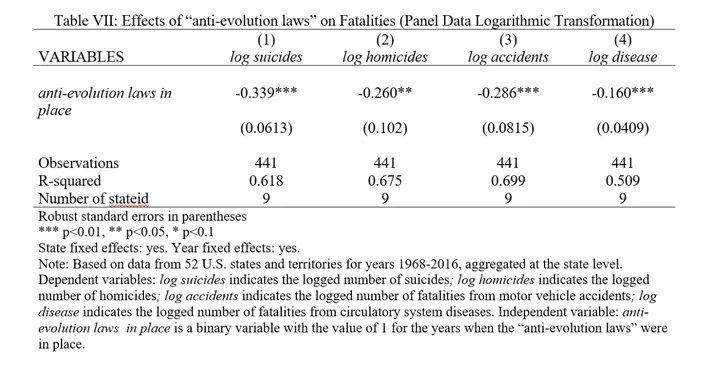The Effects of Religiosity on Fatalities from Violent Behavior
 Main Results
Main Results
In this paper, I have employed three instrumental variables to estimate the influence of religiosity on suicide and homicide as compared to its influence on motor vehicle accident fatalities and circulatory system disease fatalities.
I used panel data from 52 U.S. states and territories in the time period 1968-2016. After a series of ambiguous results, I improved my specification by using logarithmic transformation of the non-binary variables. From among the new series of regressions, only one of the instrumental variables, namely the “anti-evolution laws,” obtained statistically significant coefficients.
This heterogeneity of outcomes may suggest that religious beliefs are a stronger predictor of reduced lethal outcomes than church attendance. If this is the case, the weakening of religious beliefs not only increases not only the number of suicides, but also the number of deaths from homicides, motor vehicle accidents, and circulatory system diseases.
The reduction in suicide by increased religiosity is consistent with the existing literature, but the reduction in homicide questions findings of authors such as Chon (2015) or Jensen (2003). The impact of religiosity on the variables non-related to violent behavior is surprising but may be associated with the impact of religion on risky behavior and health choices. Finally, It is important to acknowledge that this paper is a study from the United States in the time period 1968-2016 only, and the results may or may not be valid for countries with other characteristics, such as religious structure or level of income.